
Who Were
The Cambs
The Cambs
at War
1/1st Btn 1914-1919
1914 - 1/1st Overview
1915 - 1/1st Overview
1915 - St Eloi
1915 - Fosse Wood
1916 - 1/1st Overview
1916 - The Schwaben
1916 - St Pierre Divion
1917 - 1/1st Overview
1917 - St Julien
Insignia, Medals & Books
Remembering The Cambs
Biographies
About Us &
This Site
Armentieres, Bois Grenier and Rue de Bois - May to September 1915
On the 28th May 1915 the Cambridgeshires took over the line at Armentieres, in the Pas-de-Calais region of northern France. The War Diary notes the relief started at 5.48pm and the trenches were described as “excellent, with very little firing” and this part of the line was considered by the men to be significantly quieter than their previous lodgings; with the enemy six hundred yards away.
Intelligence gathering started almost immediately with night time reconnaissance patrols heading out into No Man’s Land each night. During May, when the battalion was in Sanctuary Wood in the Ypres Salient, Lieutenant Hopkinson and Lieutenant Gill, among others, had shown considerable aptitude for patrolling and were tasked again to gather information about the ground, the enemy and their wire.
On June 1st their patrol, which included two other ranks of the machine gun section, were out in No Man’s Land and were fired upon by the enemy and both officers were wounded. Lieutenant Hopkinson sustained a serious chest wound and could not be brought in and had to be left. This was always a risk with such a small patrol where there were limited men to carry the wounded, but was a trade-off for the stealth achieved by small groups. Communications were made with the Germans the following, and next day to ascertain whether they had captured him, and they confirmed they had. Both Hopkinson and Gill were later awarded Military Crosses for their gallantry during their various patrols in May and June, although Hopkinson didn’t live to receive his award as he died of his wounds in German captivity. More details of their story can be found by clicking here.
Generally speaking, and by their own admission, notwithstanding these night-time raids this period for the Cambridgeshires was fairly quiet, with little large scale action by the enemy. It was, however, notable as a period when the battalion lost many men killed or wounded due to increased sniper activity, almost one each day during June. Disciplined movement in the trenches, actively employing counter sniper teams and targeted artillery fire were all techniques employed to reduce the numbers of these casualties, and with some success. These regular losses to enemy snipers were a hard lesson in the attrition of trench warfare for the Cambs and many heartfelt letters were written to the families of the fallen. In a letter to the mother of Arthur Allen, a 23 year old from March who was shot in the head by a sniper while washing, one friend wrote:
It is my grief and sorrow that I have to tell you some very sad news. On Friday, June 4th, poor Arthur had the misfortune to lose his life. He was hit in the head, and suffered little or no pain. His death was instantaneous... He will have as good a burial as possible, and will be laid with his fellow heroes.
He later wrote again:
Just a few lines to let you know what sort of a funeral poor Arthur had. Myself and three comrades went and dug his grave in a cemetery for British soldiers, and laid him to rest. The Major and the Captain were at the funeral, and the Major read the burial service and said some prayers. After that we went and gathered some roses, and made his grave look as nice as possible. Whilst we were burying him there were several civilians beside the grave, and some of the women of the town made it their duty to look after the graves.
More information on Pte Allen and another of the men killed by snipers in early June, Pte Whitehead, can be found by clicking here.
Unsurprisingly as a result of the Cambs success against the snipers, the German tactics changed and their emphasis switched to rifle grenades. These were similar to hand grenades but greater distance and accuracy could be achieved because they were fired from the end of the rifle rather than thrown. The regimental history notes that at this time the enemy rifle grenades were superior to ours and the casualties again started to mount as a result of this tactical change. One such occasion was the 3rd July when a rifle grenade landed among the B Company men wounding Lieutenant Crookham and privates: Anderson, Cook, Howard and Stepney. Crookham was the son of Padre Crookham who had accompanied the Cambridge contingent of the Volunteer Service Company of the Suffolk Regiment to South Africa in 1900 and typified the family service ethos within local territorial units. Further information on both Lt Crookham and his father can be found by clicking here.
Both Crookham and Howard were to die of their wounds but Anderson, Cook and Stepney all survived the incident and the War. Of these men Anderson is particularly interesting; he was hit by grenade fragments in his back but after a period of convalescence he rejoined the regiment in France, served during the 1916 battles and was decorated for gallantry for his part in the battle of St Julien in 1917 (his full biography can be found by clicking here).
Writing about the fighting in the Armentieres sector one Cambs officer wrote:
By day the enemy, like Brer Fox, lie low and say nuffin except by sniping at our loopholes; But we have altered all that. Loopholes have been concealed and replaced, Scouts crawl out in front to sniping posts, and now the enemy's loopholes, are regularly "dusted". Not a periscope is allowed to remain above the German parapets. Directly one is sighted our snipers mark it down, and soon it is hit or taken down, and the enemy to mark his annoyance sends a rifle grenade or shell over. If this is too persistent we ring up our covering battery, and soon the shrapnel are bursting over Fritz, and peace again reigns.
During this time several semi-official accounts were written and published in the local press by the Cambridgeshires. One of these described the area:
The line of trenches run through flat, smiling, arable country, with its farmsteads, alas, in hopeless ruin, and their owners! - where? one wonders. The owner came to see his farm in one place, I am told, right up through the trenches and wept. His house was up in the foremost line, a well-shelled ruin; the trees fringing the home close were riven and splintered; deep trenches seamed his fields, and where was once peaceful rural prosperity is now a hideous wreck and desolation.
Throughout their period in this sector the battalion rotated in and out of the front line about every seven days. The enemy were fairly inactive except for those tactics already outlined which remained a constant threat. There being very little defence against rifle grenades other than well-made trenches and targeted artillery, the Battalion was to suffer reasonable levels of attrition throughout their time in this “quiet” sector losing 5 officers and 20 other ranks killed, and 4 officers and 48 other ranks wounded in total.
In September the battalion was scheduled to move to the Somme area and in preparation was inspected by Lieutenant General Pultenay on the 17th. On the 19th the men entrained for Morcourt, on the River Somme, arriving there on the 20th.
The fairly static nature during May to September for the Cambridgeshires meant they suffered from snipers and rifle grenades but it was also notable because in contrast to later periods of the War those killed here were buried in an organised fashion in predetermined graveyards which survived the War. Thus the majority of the men killed during the Regiment’s time in Armentieres, Bois Grenier and Rue de Bois have known graves and a large proportion of these are in Cite Bonjean, Houplines, Brewery Road and Brewery Orchard cemeteries.
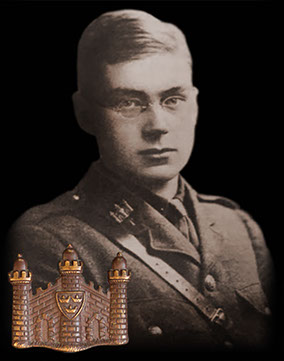
"Hopper" Hopkinson MiA at Armentieres.
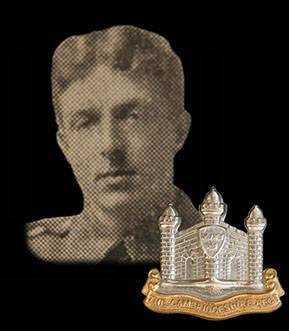
Arthur Allen from March killed 5th June.
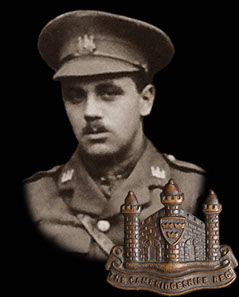
Capt R Sindall fatally wounded on 26th June.
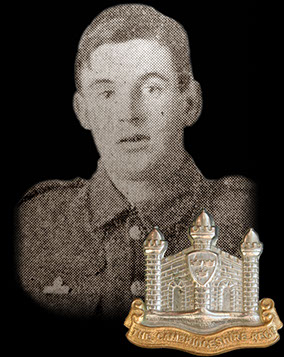
Walter Whitehead from Waterbeach, killed by a sniper while on lookout in the trenches.
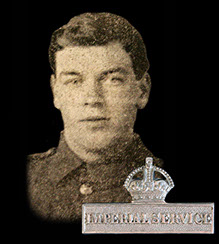
Cpl Atkins from March, killed by a sniper.

William Atkins' grave at Brewery Orchard.

This site went live on the 14th February 2015 to mark 100 years since the 1/1st Cambs went off to war.
WE WILL REMEMBER THEM
Email us: cambsregt@gmail.com
Copyright 2015, 2016, 2017, 2018, 2019 by Felix Jackson. The information and images on this site should not be reproduced without prior permission.